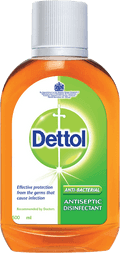
Healthy Laundry
If you wash your laundry at low temperatures, you are not alone. Because of the delicate nature of today’s fabrics and in an effort to reduce energy costs, home laundering now tends to be carried out at 30-40⁰C. However, when you wash at temperatures below 60⁰C, bacteria and other germs can survive and transfer between garments in the wash so representing an infection risk.
During your day-to-day activities, bacteria can build up on items of clothing. The items that are most likely to become contaminated are those that come into direct contact with the body or are used in potentially contaminated areas of the home. These high risk items include underwear (and socks), personal towels, facecloths, re-useable nappies/diapers, sports gear, bed clothes, and cloths and towels that are used as part of food preparation in the kitchen. Those items that are not in direct contact with the body such as ‘outer’ wear, are less likely to be a source of infection unless they have been contaminated by vomit or faecal material.
Infection risk can also increase significantly in certain circumstances:
- Where a family member has diarrhoea or vomiting;
- Where a family member has a skin or wound infection; or
- Where a family member has reduced immunity to infection.
To ensure your laundry is hygienically clean, not just visibly clean, follow these simple tips:
- For high risk items or at times when there is a greater risk, wash laundry at a higher temperature – greater than 60°C.
- Where this is not possible, or if you choose to wash at low temperatures - below 60°C - ensure you add a laundry sanitizer or disinfectant, like diluted Dettol Antiseptic Liquid to your wash to help protect against potentially harmful bacteria that may survive at lower temperatures.
- Launder items used around food, e.g. tea towels and dishcloths, separately from other items.
- When washing re-useable nappies/diapers, remove all solid material with tissue and discard it to the toilet. Wash nappies separately using a prewash cycle followed by a hot wash (greater than 60°C).
- Do not prewash dirty items by hand in sinks or surrounding areas before machine washing as this can contaminate these areas.
- If you wash your baby’s clothes (excluding nappies) together with your regular household laundry, add a laundry disinfectant to ensure your washing is hygienically clean.
- If a member of the family or your baby is unwell, try to wash their clothes separately with a laundry disinfectant to minimise the risk of spreading any infection.
- Dry laundry as soon as possible after the wash (e.g. don’t leave it damp overnight) as any remaining germs may multiply.
- The higher the temperature the better the germ kill. To stop the build-up of bacteria and other germs in your machine, put it on a 90°C cycle (or the highest temperature the machine will allow) once a week. Leave the door and detergent tray open after every use to allow inter surfaces to dry.
- Wash hands thoroughly after handling soiled laundry.
- Remember Dettol Antibacterial Laundry Cleanser kills 99.9% of bacteria even at low temperatures.
